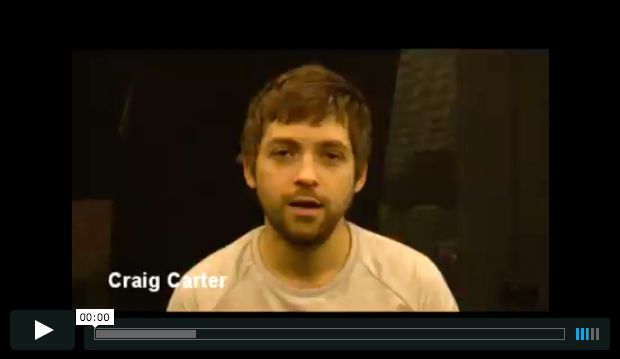Want to discover new acting training methods?
Here you can read some information and see sample acting exercises on unique acting techniques taught in some acting schools: the methods of Tadashi Suzuki, Viola Spolin and Anne Bogart. If you want to go beyond the leading acting techniques like Method Acting and Meisner, read on to discover these lesser known but unique acting methods.
1) The Spolin Technique
What is it? The acting technique developed by Viola Spolin uses improvisation and some 200 plus theater games and acting exercises to access the actor’s creativeness. Through play, the actor can free his instrument and become more spontaneous, as well as work on specific issues like concentration, characterization and conflict.
What can you expect? A lot of improvisation work, from physical improvisation to singing and word games. Most of the games are done in groups so there is a strong sense of ensemble.
Sample Acting Exercise. Two actors face each other. One imitates the other’s gestures but both try to conceal from the audience who is initiating the movement and who is following. This mirror exercise is a great way to work on concentration.
Is it for you? Because this acting technique is based on theater games and playing, it is a very good choice for children actors and comedy actors. It’s also useful for any actor who struggles with self-consciousness or has been told, “you need to get out of your head”. Although this acting method came from the theater, film actors will also find it useful to solve specific problems they’re having with a role or character.
The must-have book. Get a copy of Viola Spolin’s book, Improvisation for the Theater, and you’ll likely find an exercise to address any acting issue you’re having.
2) The Acting Training of Tadashi Suzuki
What is it? This acting technique often taught alongside the Viewpoints method is also very focused on the body, especially the lower body and the feet, the actor’s “roots”.
This acting technique is grounded in ballet, Greek and Japanese theater, and martial arts.
What can you expect? A rigorous training that at times may feel more like
a martial arts class then an acting class. The training focuses on developing the actor’s
center through a series of walking and stomping exercise. You will also work intensely on
vocal exercises and concentration through stillness.
Below is a video on the Suzuki acting technique you may find interesting. It talks about how Suzuki
acting training challenges the actor and helps him or her with body awareness and focus. It explains how
it helps actors reach their souls through the body.
Sample Acting Exercise. The actor stomps through the classroom to a strong beat with knees slightly bent, concentrating his energy in the lower body. The idea is to try to maintain a strong stomp while keeping the upper body completely still and relaxed.
Is it for you? This is one of the acting techniques better suited to stage acting. You should also consider adding a Suzuki workshop to your acting studies if you are struggling with concentration and presence on stage.
The must-have book. The Way of Acting
by Tadashi Suzuki.
3) Viewpoints Acting
What is it? This method was originally created for dancers and is strongly grounded in movement and the actor’s body. Actors are encouraged to explore space and time from 9 different viewpoints: Architecture, Space, Shape, Choreography, Gesture, Duration, Tempo, Repetition and Reaction.
What can you expect? Your acting classes will include a lot of improvisation using music, movement and voice. Most acting schools that teach Viewpoints will also offer a more traditional acting training curriculum.
Sample Acting Exercise. Here’s a basic Viewpoints space exercise you can try at home: Just walk around and stop. Try to get a sense of where you stand in space by observing dimensions and distances between yourself and objects surrounding you. In class, you would also observe the special relationships with other actors standing in the room.
Is it for you? This acting training is especially useful if you are mostly interested in theater acting because it will help you develop a strong presence on stage and work well in an ensemble. This method may be more appealing to you if you are a very physical actor or a dancer turning to acting. You may also consider a Viewpoints class if you need to work on your physicality on stage or if you want to get more comfortable in front of an audience.
The must-have book. The Viewpoints Book: A Practical Guide to Viewpoints and Composition
by Anne Bogart and Tina Landau.
Looking for a more mainstream acting techniques taught in acting schools?
Visit our acting techniques page for acting training details on the major acting methods, from Stanislavski to Meisner.
https://www.kimiafarmalampung.com/
toto togel
slot gacor
https://www.kimiafarmapontianak.com/
https://www.kimiafarmariau.com/
https://www.kimiafarmasurabaya.com/
bento4d
penidabet
situs togel resmi
data hk
bento4d
situs togel
situs toto
toto slot
toto slot
penidabet
toto slot
situs togel
situs toto

1 reply on “Acting Training Beyond the Usual Acting Technique”
Very good information about acting techniques.